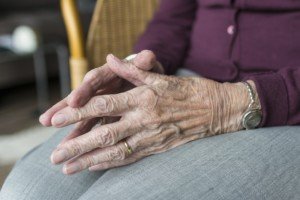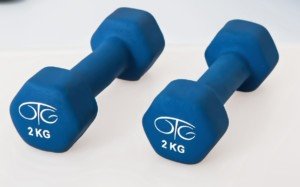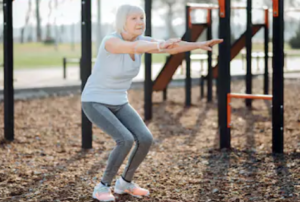
Let’s suppose you know an elderly man or woman who’s weak and frail, but does not use a cane for walking.
Should this person start a strength training program or a walking program — or both at the same time?
The typical elderly person who’s considered weak does very little walking — only what they absolutely need to do, such as around the house and while shopping.
Walking for the Weak Elderly Individual
“The answer is truly it depends on how weak,” says D’Wan Carpenter, DO, a board certified physical medicine and rehabilitation physician with SIMEDHealth in FLA.
“As a general rule, I would start a more sedentary elder with walking a set distance or time until that became slightly easier.
“Then I recommend increasing the distance and/or time. Once the increased distance or time has become routine, the next best thing is to add ankle or wrist weights to the walk.”
Example Walking Program for a Weak Senior Age Person
- Walk from one end of a long stretch of room in the house to the other — at a faster-than-normal pace for that person.
- Do the return walk slowly to recover.
- Alternate this way for five minutes if possible. This assumes that the person does not have bone-on-bone osteoarthritis.
- Over time, increase one of several metrics: 1) duration of overall walking, 2) duration of just the brisk portion, 3) add soup cans or one-pound dumbbells to the person’s hands.
Walking or light aerobics is not a substitute for strength training: pushing or pulling against resistance, which can be in the form of tension bands, a weighted ball, soup cans or small dumbbells.
Strength Training for the Weak Elderly Person

“I do agree that an elderly person with decreased strength can indeed do walking and strength training,” says Dr. Carpenter.
“Some may need to start with walking first and then add the weight training.
“One good option to add weights is to use the ones that can be strapped to the wrists and ankles during a walk.
“There are several studies which note several benefits to strength training which include building muscle, preserving bone density, decreasing osteoporosis risks, improving mood and better sleep, just to name a few.
“Some helpful exercises include biceps arm curl, triceps extension, shoulder press and squats.”
Squats can be done with one’s body weight only, as depicted below, but if it’s necessary to hold onto something for balance, one should do that.

Shutterstock/Dmytro Zinkevych
However, to improve balance and coordination, the elderly individual should not grip the support too tightly or rely on it any more than what’s absolutely necessary.
 Dr. Carpenter is one of the nation’s top board-certified physical medicine and rehabilitation physicians, a national speaker, medical legal expert and independent medical examiner. She is founder and Chief Medical Officer of DJC Physical Medicine Consultants. Follow Dr. D’Wan on Twitter.
Dr. Carpenter is one of the nation’s top board-certified physical medicine and rehabilitation physicians, a national speaker, medical legal expert and independent medical examiner. She is founder and Chief Medical Officer of DJC Physical Medicine Consultants. Follow Dr. D’Wan on Twitter.
 Lorra Garrick is a former personal trainer certified through the American Council on Exercise. At Bally Total Fitness she trained women and men of all ages for fat loss, muscle building, fitness and improved health.
Lorra Garrick is a former personal trainer certified through the American Council on Exercise. At Bally Total Fitness she trained women and men of all ages for fat loss, muscle building, fitness and improved health.











